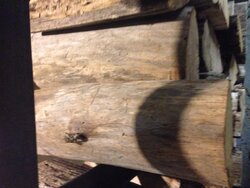First I'd like to say thanks to everyone who have shared there knowledge and experience on this forum. In the past two years many of my questions as a rookie wood burner have been answered by reading this forum.
This fall I purchased a drolet myraid from a box store. The stove has worked great so far but while running it last week I noticed the side was glowing just a bit after a reload. The temp on the stove pipe thermometer was only at 550 which has been consistent with other reloads and normal operation. So my question is since there is only a single row of fire brick in this model will adding a second row on top of the first help or could it potentially damage my stove .
As a side note do airtight stove make more charcoal than other older stoves. Through out the day the stove creates a lot of coals which is great for starting a new fire but not so much while burning all day.
This fall I purchased a drolet myraid from a box store. The stove has worked great so far but while running it last week I noticed the side was glowing just a bit after a reload. The temp on the stove pipe thermometer was only at 550 which has been consistent with other reloads and normal operation. So my question is since there is only a single row of fire brick in this model will adding a second row on top of the first help or could it potentially damage my stove .
As a side note do airtight stove make more charcoal than other older stoves. Through out the day the stove creates a lot of coals which is great for starting a new fire but not so much while burning all day.




